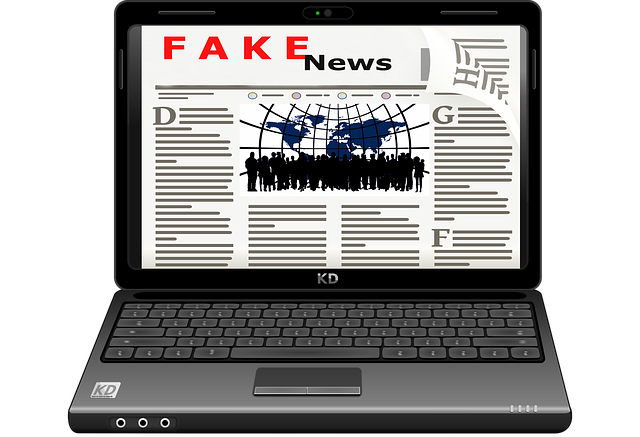 Corporate communications professionals and others trying to refute fake news and misinformation face a quandary. When rebutting a falsehood, they worry they’ll repeat the misinformation and inadvertently strengthen it. They also ponder how much correct information is needed to refute false claims.
Corporate communications professionals and others trying to refute fake news and misinformation face a quandary. When rebutting a falsehood, they worry they’ll repeat the misinformation and inadvertently strengthen it. They also ponder how much correct information is needed to refute false claims.
Providing an alternative explanation to misinformation is more effective than denying the false claims alone, concludes a research paper by Brendan Nyhan of Dartmouth College and Jason Reifler of the University of Exeter. Denying misleading claims can reduce misperceptions, but that tactic can fall short because people may still remember the debunked information if they lack alternative explanations.
Researchers presented study participants a scenario about a fictional politician’s retirement with varying amounts of information, including rumors of bribery (misinformation), denials of such rumor (correction), and clarification that they retired to take a new position elsewhere (causal explanation). Stating that the misinformation was false through a denial had a limited effect on reducing false belief, while presenting a causal explanation eliminated the misperceptions caused by the rumor.
By providing an alternative explanation, corporate communications can persuade people to revise their beliefs and reject falsehoods they read or heard. Corrective communications should focus on explaining what actually happened instead of bolstering the negation of the claim, write Dr. Terry Flynn and Tim Li in an Institute for Public Relations blog post.
“Stakeholders may still rely on rumors or other misleading claims when assessing a situation if corrections leave gaps in their understanding,” they say. “Even providing credible sources with evidence that corroborates a denial appears insufficient.”
The Value of Detailed Refutations
Other research finds that detailed refutations are more effective than short refutations. Short refutations reduce beliefs in false claims. However, detailed refutations are more likely to be remembered as time goes on, according to research by Ullrich K. H. Ecker, Ph.D., Ziggy O’Reilly, Jesse S. Reid and Ee Pin Chang of University of Western Australia.
The findings are especially relevant for PR pros trying to counter misinformation on social media. Even short-form refutations, such as a tweet, are effective for reducing beliefs in false claims. But by going beyond simply stating that a claim is false and providing a little extra detail, the correction will have a longer lasting impact.
“It’s as important to emphasize what information is true, as it is to identify what is false or misleading,” write Flynn and Li for the Institute for Public Relations.
The Dilemma of Repeating Misinformation
The research found no evidence that repeating misinformation within a correction strengthens the false claims.
However, an earlier study warns that repeating false information may inadvertently strengthen it. That’s a pronounced risk if the false argument offers a simpler explanation than the truth, according to the study by the Social Action Lab at the University of Illinois at Urbana-Champaign and at the Annenberg Public Policy Center of the University of Pennsylvania.
For that reason, the researchers recommend against simply labeling false news as incorrect. A well-argued, detailed counter explanation with new information will be more effective, they agree.
The researchers cited the repeatedly debunked belief that vaccines cause autism.
“The best way to displace that would be to say, ‘Here’s a causal explanation for autism, and it isn’t that,’ but science doesn’t know the causal explanation for autism yet,” Kathleen Hall Jamieson, one of the study’s authors, told The New York Times.
The Media Monitoring Solution
The authors encourage the continued development of “alerting systems” for debunking misinformation. Current alerts include Snopes.com (fake news), RetractionWatch.com (scientific retractions), and FactCheck.org (political claims). Communications professionals for businesses and non-profits that wish to debunk a specific piece of fake news can notify those alerting services and publish corrections of misinformation on their corporate and brand websites and in the organization’s social media accounts.
“Such an ongoing monitoring system creates desirable conditions of scrutiny and counter-arguing of misinformation,” the researchers note.
Businesses can also request correction by contacting editors or writers of news sources and social media accounts where the misinformation appeared. Most public relations experts suggest following up only with sources where the misinformation appeared and not issuing a correction in a general news release. Companies can also use their owned media such as corporate and brand websites to thoroughly refute the misinformation.
Not all misinformation needs to be refuted, especially if it has had limited circulation or is trivial.
Corporations, nonprofits and other organizations can use a media monitoring tool that reports mentions of their brands, products and services. Real time alerts can immediately notify the PR and marketing staff when the organization is mentioned on websites and social media. By using staff or freelancers to read all media mentions, the organization will be able to quickly identify and counter any misinformation before it spreads. Since most false information starts on a handful of websites, it’s worthwhile to monitor those fake news websites.
Bottom Line: New research provides insights and helpful advice for how to refute fake news and misinformation. As misinformation continues to proliferate, prudent businesses and nonprofits remain on guard to detect and quash misinformation.
William J. Comcowich founded and served as CEO of CyberAlert LLC, the predecessor of Glean.info. He is currently serving as Interim CEO and member of the Board of Directors. Glean.info provides customized media monitoring, media measurement and analytics solutions across all types of traditional and social media.




nice artcle .. i got some thought from ur article
tq